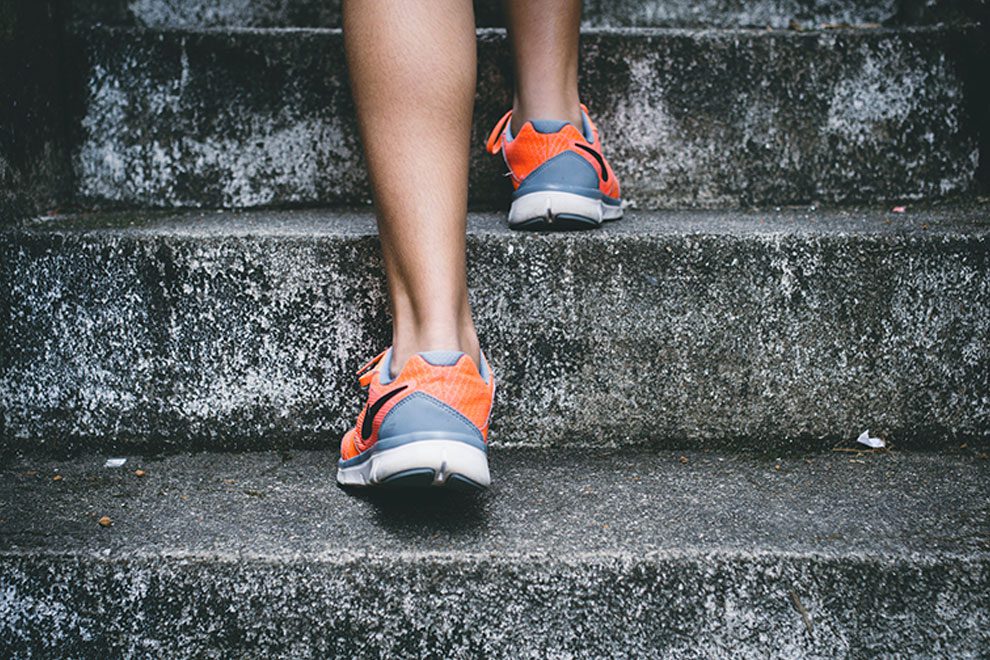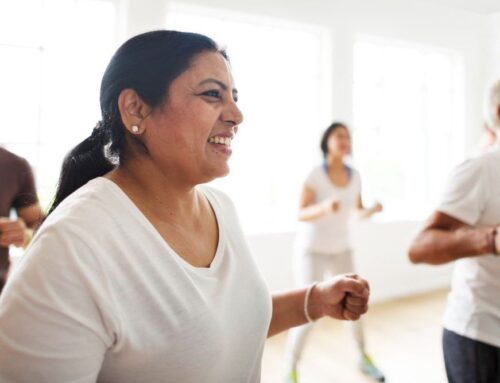Cardiovascular Health Benefits
- Reduces the risk of developing and or dying from heart disease or stroke.
- Reduces blood pressure and your risk of developing high blood pressure.
- Reduces the risk of developing the metabolic syndrome (a combination of high blood
- pressure, high blood sugar, and low “good” cholesterol).
- Increases HDL (good) cholesterol, decreases triglycerides—
- an unhealthy type of fat in the blood.
- Reduces the risk of developing diabetes. Helps to control
- blood sugar in people with diabetes.
- Helps to maintain a healthy weight. Helps overweight people lose weight.
- Improves heart and lung function.
- Increases the amount of blood pumped with every heart beat.
- Increases oxygen delivery to the muscles.
- Allows you to do more with less effort—increases energy level.
Other Benefits
- Improves your ability to play sports.
- Increases muscle strength.
- Improves flexibility and range of motion of joints.
- Improves balance and function in older adults.
- Reduces depression and anxiety.
- Relieves stress—is a good way to get rid of anger and frustration.
- Reduces the risk of some cancers (colon, breast, lung).
- Reduces the risk of developing osteopenia/osteoporosis
- (thinning of the bones which can lead to fractures).
- Improves sleep.
How to Start an Exercise Program
How much exercise should I get?
The exercise goal for most adults is 150 minutes of moderate physical activity per week.
Ask your healthcare provider how much is right for you, especially if you have heart disease or other healthcare concerns. You may also choose to measure steps per day using a pedometer to monitor your progress. 10,000 steps a day, most days of the week, is a similar goal to the one listed above.
How do I get started?
Your healthcare provider can help you find out whether or not you need to do a stress test
before starting an exercise program. This is very important if you have not been active for some time or if you have health problems.
Pick an exercise that you like to do. Be realistic given the climate you live in and any physical
limitations you may have. Examples of moderate-intensity exercises that may help your heart include: walking, jogging, swimming, bicycling, rowing, tennis, and dancing. You may want to choose more than one activity to prevent boredom and for bad weather days!
Start slowly and gradually build up your time to the daily/weekly target above. If you have not exercised for some time, start with 10 minutes a day of light to moderate exercise. Try to add 3-5 minutes to your daily exercise after the first week. Continue to add time this way until you are able to exercise for at least 30 minutes. At 30 minutes, you may also wish to increase how hard you are working (known as exercise intensity).
Other tips for monitoring your exercise intensity
The talk test If you are so short of breath and can’t keep up a conversation or
hum a song, you are overdoing it.
Symptoms If you feel chest pain, nausea, shortness of breath (not just breathing harder)
or become dizzy with exercise, slow down and/or stop what you are doing. Report these symptoms to your healthcare provider. Feeling very tired or having muscle or joint pain during or after exercise, may also be signs that you are overdoing it. These signs should be reported to your healthcare
provider.
Warm-up and cool down
Being active throughout your day is another way to reach your target exercise/activity minutes.
• Take the stairs instead of the elevator
• Go for a walk during your work breaks
• Park farther away from buildings
• Walk to your co-workers’ offices instead of phoning or e-mailing them
A pedometer allows you to measure how much activity you are getting
throughout your day. If you note when you get home in the evening that you are short your 10,000 steps, go for a walk to reach your goal (5000 steps = approximately 2½ miles).
Exercise: Goal Setting
Motivation for exercise may be enhanced by following the S.M.A.R.T. goal-setting principle.
Specific. Set specific goals: an example of a specific goal is “I want to complete
the 5 K (3 mile) Heart Walk in October”.
Measurable. The above statement is a measurable goal, however, to stay on track
with your goal, measure your progress with an interval measurable goal. In this case, if you have eight weeks to prepare, plan to walk one-half mile weekly each day of the first week, then progress to 1 mile the 2nd week, 1½ mile the 3rd week and so on. Keep a record of your progress; using a journal may help keep you
on track.
Adjustable. Making adjustable goals means you are flexible. In the above case,
if you have a setback due to illness or injury, you may adjust your goal to do the
Realistic. Realistic goals mean you start where you are and set your goal
accordingly. The above example is realistic if you haven’t been a regular exerciser.
Running a marathon would not be a realistic goal. Once you’ve completed a
5 K walks, you may wish to set your sights on a 10 K and so on. This would be an example of progressive, realistic goal setting.
Time-based. The example above: “I want to complete the 5K Heart Walk in October” is time-based. The 8-week timeline is short enough to prevent boredom.
In general, goals that reach out beyond 6 months are too long to keep you interested and motivated. Set and re-evaluate goals every 2-3 months.
Tips for Sticking With It!
Start slow and gradually increase
A little exercise is better than none, so start slowly. Don’t expect results overnight, but do take small steps each day. It can take weeks or months to see benefits such as weight loss.
Get a partner or join a class
Exercise with a friend or a group to make it more fun! You are less likely to cancel an exercise date with a friend than one with yourself!
Vary your routine
To prevent boredom or if you are injured change your exercise
routine. Walk one day; bicycle the next. Mix in recreational sports like golf or tennis to stay active and keep exercise fun. Learn to dance or garden; even chores like mowing the lawn and cleaning your house can keep you moving.
Plan your walking route to take in new sights—vary the neighborhoods you walk through and notice the architecture, landscapes and gardens. Take a walk through the zoo or
arboretum. Listen to music or a recorded book to help pass the time. Exercise on a treadmill or stationary bike while reading or watching TV.
Write it down
Keep an exercise journal. Write down what you did, how long you did it, and how you felt. This helps to track your progress. Keeping a journal can also be a good way to set future goals. Write down where you want to be next week, month or year.
Try something new
Make exercise a habit
Choose a regular time for exercise each day. Sign a contract with yourself to exercise. Put exercise “appointments” on your calendar and keep them!
Make exercise one of your first priorities. You have to believe that exercise is important enough to make it happen. Evaluate the benefits of exercise and your reasons for becoming active.






